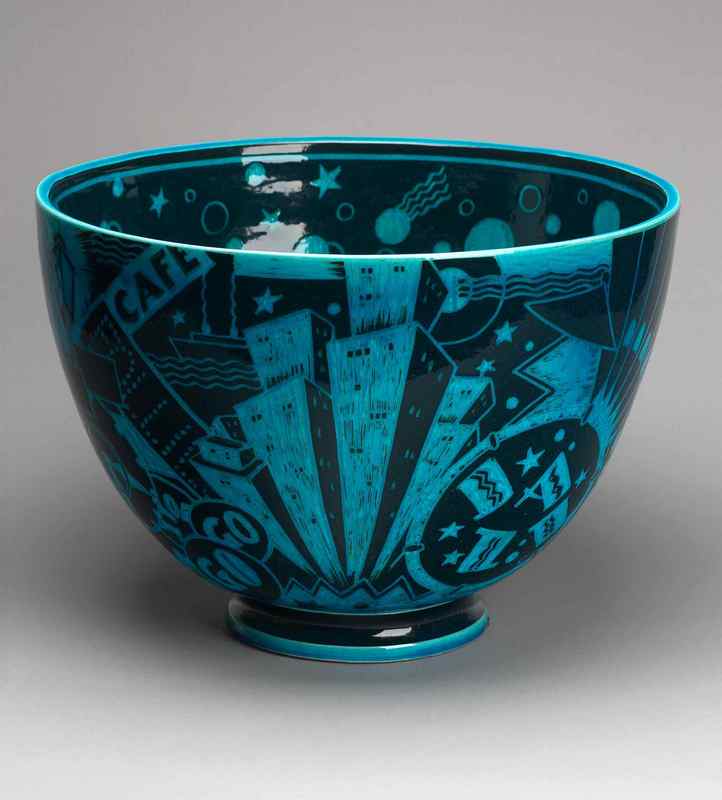
R. Guy Cowan opened Cowan Pottery on Nicholson Avenue in Lakewood in 1912. The studio produced mainly architectural tiles, but also made a line of vases and bowls called "Lakewood Ware." Work from this period can be found in the East Cleveland Public Library and in some private homes. During World War I, Cowan closed his studio to serve in the army.
In 1920, after Cowan's return from the war, the pottery studio moved to 19633 Lake Road in Rocky River. The pieces produced at the Rocky River studio shifted the focus of the pottery towards commercial production. Cowan had a staff of skilled artisans and in the mid-1920s some other established artists came to work at the pottery. Some were not trained in ceramics and had to be convinced by Cowan to try their hand. Others were students of Cowan at the Cleveland Institute of Art. Artists such as Elizabeth Anderson, Thelma Frazier Winter, and Viktor Schreckengost worked at Cowan Pottery between 1920 and 1931.
During the twenties, Cowan Pottery was popular and successful, with Guy Cowan using his awards and national recognition to advertise the pottery. His work was sold in most major cities in the US as well as a few retailers in Canada. However, in 1931 Cowan Pottery began to feel the effects of the Great Depression and Cowan could no longer pay his employees or bills. The pottery closed that December.
Most of the buildings that housed Cowan Pottery in Rocky River still stand today, and a museum devoted to the pottery can be found in the Rocky River Public Library. Viktor Schreckengost's line of Jazz Bowls, originally created for Eleanor Roosevelt, can be seen in many museums, including the Cleveland Museum of Art.
Video
Images







